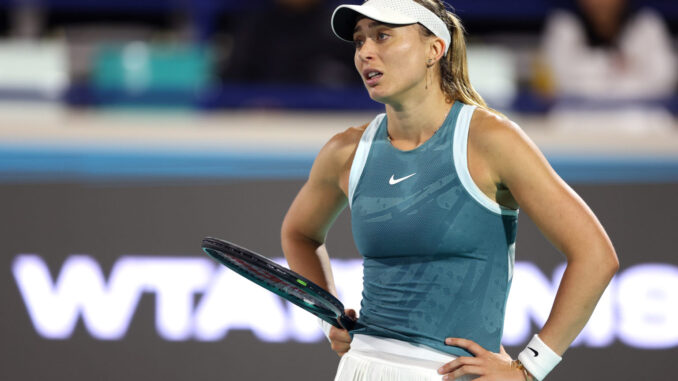
The delicate balance between peak performance and physical well-being, a constant tightrope walk for professional athletes, was once again brought into sharp focus as a prominent figure in the top 10 of the WTA rankings suffered an untimely injury. The incident, occurring during a quarter-final match in Mexico, forced her to retire, casting a shadow of uncertainty over her participation in the upcoming Indian Wells tournament.
The abrupt conclusion of the match, a stark departure from the expected battle of wills, sent ripples of concern through the tennis world. The sight of a top-tier athlete, forced to concede due to physical limitations, served as a stark reminder of the grueling demands of the sport. The athlete, who had demonstrated exceptional form leading up to the quarter-final, was visibly distressed as she signaled her inability to continue.
“It’s incredibly frustrating,” she was heard to say, her voice laced with disappointment. “You train so hard, you prepare so meticulously, and then something like this happens. It’s just devastating.” This expression of frustration, a sentiment echoed by athletes across all disciplines, highlighted the emotional toll that injuries can take.
The specific nature of the injury, while not immediately disclosed in detail, was reported to be related to a recurring issue. The athlete had been managing the condition for some time, but the intensity of the quarter-final match exacerbated the problem, forcing her to make the difficult decision to retire.
“I’ve been dealing with this for a while,” she explained. “But it just flared up again, and I couldn’t push through it. I had to listen to my body.” This acknowledgment of the importance of self-awareness, of recognizing the body’s limitations, underscored the athlete’s commitment to her long-term health.
The timing of the injury, occurring just before the prestigious Indian Wells tournament, added another layer of concern. Indian Wells, a highly anticipated event on the WTA calendar, attracts the best players in the world. The prospect of missing such a significant tournament was undoubtedly a source of disappointment for the athlete.
“Indian Wells is a tournament I always look forward to,” she admitted. “It’s a special place, and I was really hoping to compete there. Now, I’m just hoping I can recover in time.” This expression of hope, tempered with uncertainty, reflected the athlete’s desire to return to competition as soon as possible.
The incident also highlighted the delicate balance between pushing through pain and risking further injury. Professional athletes are often required to play through discomfort, to manage minor injuries, and to push their bodies to the limits. However, there is a fine line between resilience and recklessness.
“You have to know when to push and when to stop,” she stated. “It’s a difficult decision, but ultimately, you have to prioritize your health.” This emphasis on prioritizing health, on making informed decisions about physical well-being, underscored the athlete’s maturity and her commitment to her long-term career.
The recovery process will undoubtedly be a period of intense focus and dedication. The athlete will work closely with her medical team, undergoing rehabilitation and treatment to address the injury. The goal will be to return to full fitness as quickly and safely as possible.
“I’m going to do everything I can to get back on the court,” she affirmed. “I’m determined to overcome this setback and come back stronger.” This determination, a hallmark of elite athletes, will undoubtedly drive her recovery process.
The incident also served as a reminder of the unpredictable nature of professional sports. Injuries are an inherent part of the game, a constant risk that athletes must manage. The ability to adapt to setbacks, to maintain a positive mindset, and to persevere through adversity is crucial for success.
The athlete’s fans, who had been eagerly anticipating her performance at Indian Wells, expressed their support and well-wishes. The outpouring of messages, filled with encouragement and empathy, provided a source of comfort and motivation. The athlete’s situation highlights the vulnerability that even the most elite athletes feel, and that they are still people who need support.
Leave a Reply